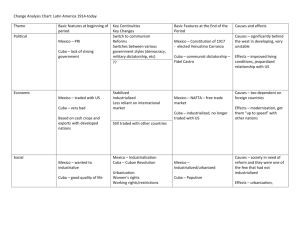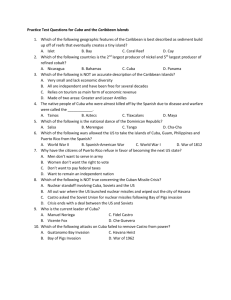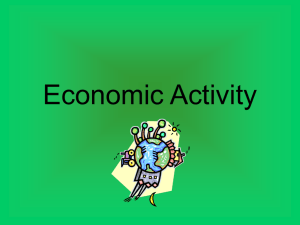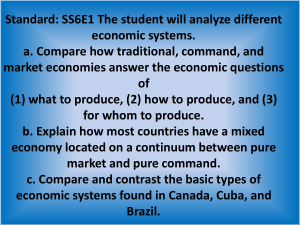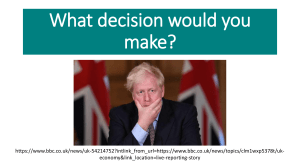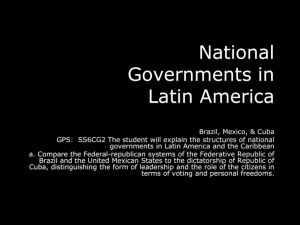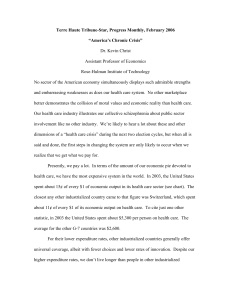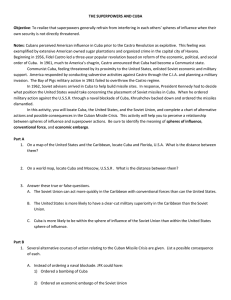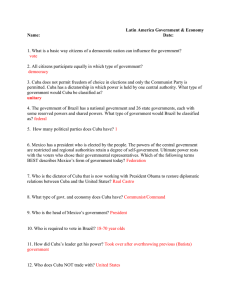Country Classifications
advertisement
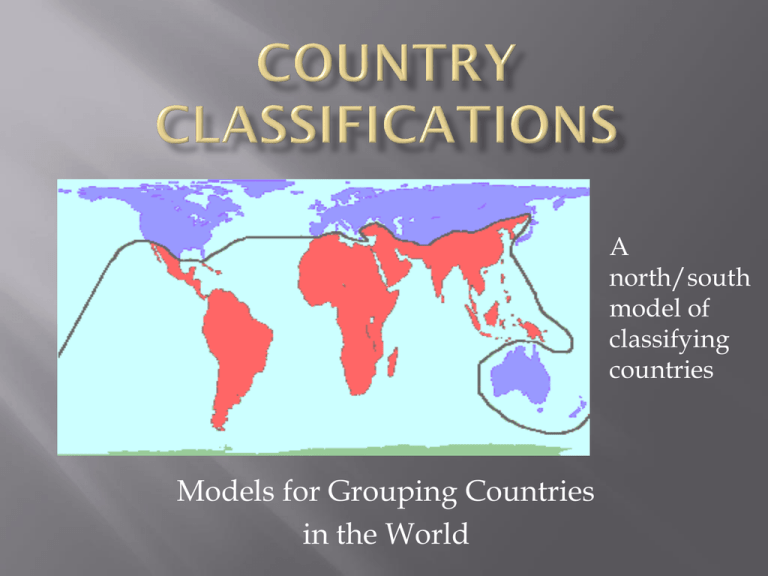
A north/south model of classifying countries Models for Grouping Countries in the World How many countries are there in the world? This question is not as easy as it may seem to answer. The reality is that while there are perhaps 195 commonly accepted countries, many are still in dispute as independent nations, depending on the perspective. For example, many nations of the world consider Tibet and Taiwan to be countries in their own right, but China would disagree, and maintain that they are provinces of China. So what determines whether or not a region can claim to be a “country” or “nation”? The answer may depend on your perspective! Most countries can be grouped according to their level of social and economic development and have been classified in various ways over time. Social Development is measured by characteristics such as level of education, health care, jurisprudence (legal system), life expectancy, rate of infant mortality, etc. Economic Development is measured by characteristics such as community wealth and trade through per capita GDP (Gross Domestic Product), ratio of cars to people, per capita electrical power capacity, etc. Terms such as Developed, Newly Industrialized and Developing have been used to group countries together based on similar social and economic development criteria. 1.) Developed Countries are considered to be socially and economically progressive and include countries such as Canada, the US, Germany, France, Japan, etc. 2.) Newly Industrialized Countries are identified more on economic characteristics as countries that are in a transitional stage and moving from an agriculturally based economy to one that is industrial and/or service based such as India, China, Brazil and Mexico. 3.) Developing Countries are considered to be moving towards more progressive social and economic status, but not there yet. They have high levels of poverty and the economy is usually focused on agriculture. Examples of developing countries would be Bangladesh, Haiti, Ethiopia, etc. *It must be emphasized that just because a country is considered to be “developing”, does not mean that it is not culturally sophisticated with a rich and diverse history. Some believe that this Three-World geopolitical model is too simplified and prefer a Five-World Model. 1.) First World Countries would be the equivalent to Developed Countries (e.g. Canada, US, Germany, etc.) 2.) Second World Countries include those that were or are communist such as Cuba, China, Russia, etc. They have social development characteristics similar to those of First World or Developed countries but their economic development characteristics are more like that of much poorer nations such as Fourth and Fifth World or Developing countries (or vice versa). Raúl Castro current President of Cuba Flag of Former Soviet Union Fidel Castro former leader of Cuba Xi Jinping President of the People’s Republic of China 3.) Third World Countries in this classification would be similar to those in transition such as the Newly Industrialized Countries (e.g. India, China, Brazil, etc.) 4.) Fourth World Countries include those that are only in early stages of transition towards being developed. For example: Rwanda, Swaziland, etc. 5.) Fifth World Countries show little evidence of even starting a transition towards development, often due to level of poverty or due to being affected by war or natural disaster. For example: Haiti, Afghanistan, Congo, Somalia, etc. Read Chapter 2 Define bold, key terms from your reading Answer Q. # 2, 3 and 4 from p. 28 at the end of the chapter, in full and complete sentences. Incorporate the question into your responses.
